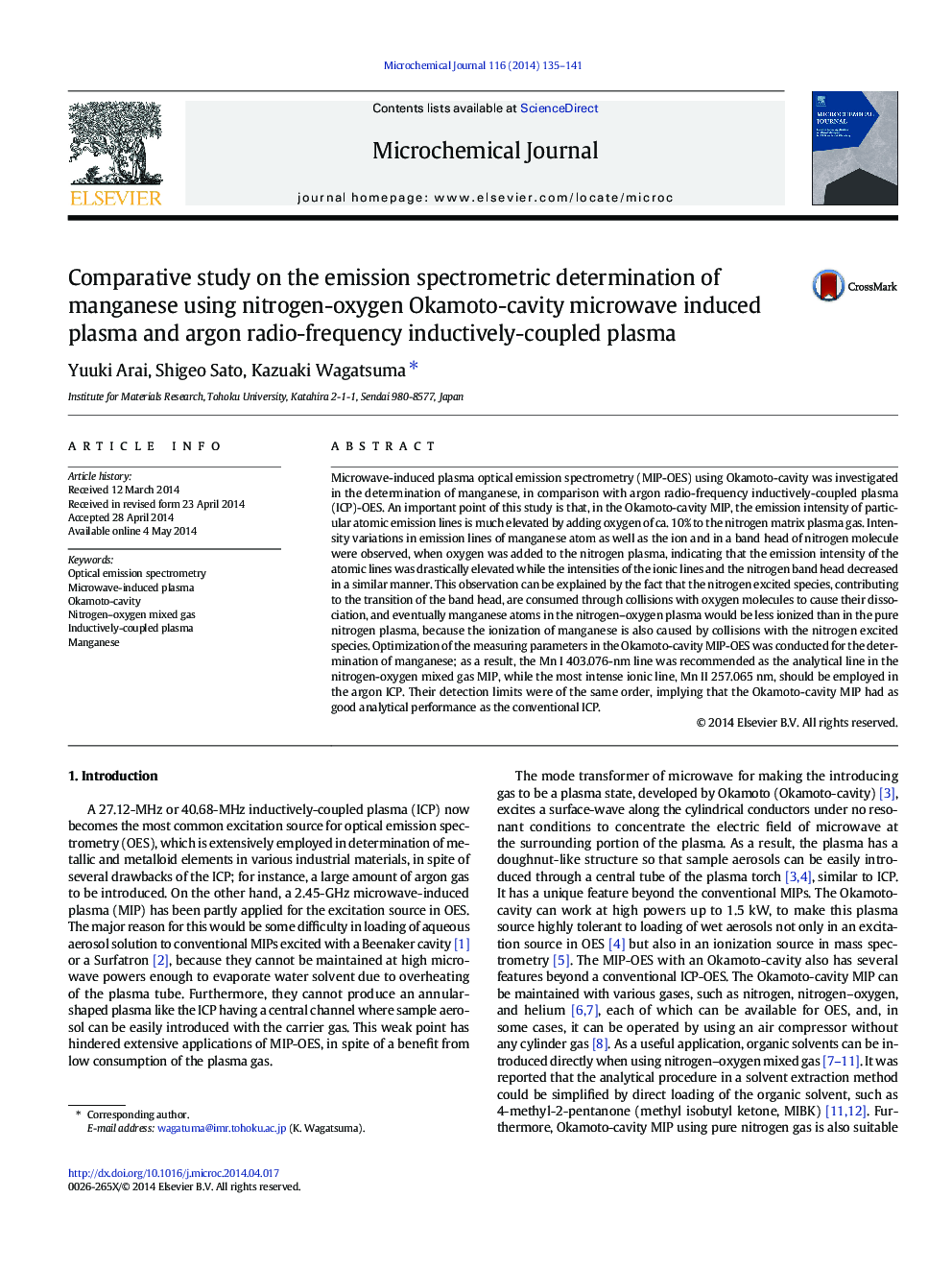| Article ID | Journal | Published Year | Pages | File Type |
|---|---|---|---|---|
| 7642954 | Microchemical Journal | 2014 | 7 Pages |
Abstract
Microwave-induced plasma optical emission spectrometry (MIP-OES) using Okamoto-cavity was investigated in the determination of manganese, in comparison with argon radio-frequency inductively-coupled plasma (ICP)-OES. An important point of this study is that, in the Okamoto-cavity MIP, the emission intensity of particular atomic emission lines is much elevated by adding oxygen of ca. 10% to the nitrogen matrix plasma gas. Intensity variations in emission lines of manganese atom as well as the ion and in a band head of nitrogen molecule were observed, when oxygen was added to the nitrogen plasma, indicating that the emission intensity of the atomic lines was drastically elevated while the intensities of the ionic lines and the nitrogen band head decreased in a similar manner. This observation can be explained by the fact that the nitrogen excited species, contributing to the transition of the band head, are consumed through collisions with oxygen molecules to cause their dissociation, and eventually manganese atoms in the nitrogen-oxygen plasma would be less ionized than in the pure nitrogen plasma, because the ionization of manganese is also caused by collisions with the nitrogen excited species. Optimization of the measuring parameters in the Okamoto-cavity MIP-OES was conducted for the determination of manganese; as a result, the Mn I 403.076-nm line was recommended as the analytical line in the nitrogen-oxygen mixed gas MIP, while the most intense ionic line, Mn II 257.065Â nm, should be employed in the argon ICP. Their detection limits were of the same order, implying that the Okamoto-cavity MIP had as good analytical performance as the conventional ICP.
Related Topics
Physical Sciences and Engineering
Chemistry
Analytical Chemistry
Authors
Yuuki Arai, Shigeo Sato, Kazuaki Wagatsuma,
